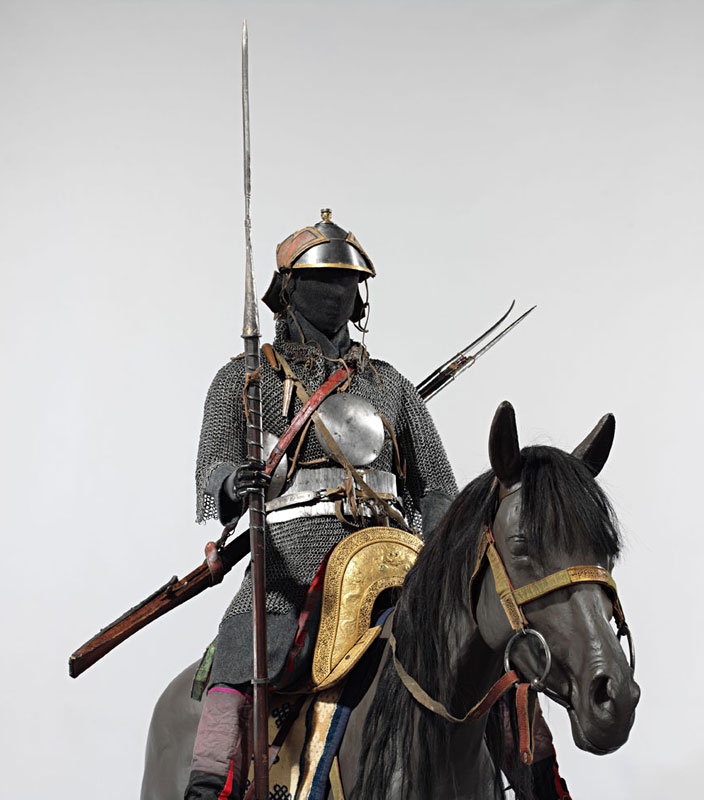|
|
previous image || Warriors
of the Himalayas main exhibition || next image
Armored Cavalryman
Tibetan, possibly Bhutanese and Nepalese, 18th–19th century
Iron, gold, copper alloy, wood, leather, textile
The Metropolitan Museum of Art, Bequest of George C. Stone, 1935 (36.25.25,
.28,
.351, .476, .583a–c, h–k, .842a–c, .2174, .2461, .2505,
.2557);
Bequest of Joseph V. McMullan, 1973 (1974.160.10 [saddle rug]);
Gift of Mrs. Faïe J. Joyce, 1970 (1970.164.7a, b [boots])
cat. no. 46

This figure has been assembled based
on photographs taken in the 1930s and 1940s in the Tibetan
capital of Lhasa during the Great Prayer Festival, which
included troops of ceremonial armored cavalry that wore
a standardized set of equipment as stipulated by the central
government of Tibet probably from the mid-seventeenth or
eighteenth century onward. It included a helmet, shirt of
mail, set of four mirrors, armored belt, bow case and quiver,
matchlock musket, bandoleer with gunpowder and bullets,
and short spear for the rider as well as a saddle, saddle
rug, and tack for the horse. Armed and equipped in a similar
fashion, Tibetan government officials were periodically
required to demonstrate proficiency on horseback with musket,
bow and arrow, and spear until as late as the mid-twentieth
century.
Detail: Side view
Detail: Back view
|
all text & images © Metropolitan Museum
of Art |
previous image
|| Warriors of the Himalayas main exhibition
|| next image
|
|